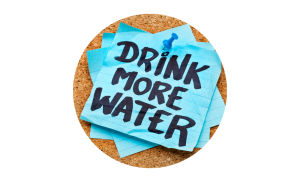Obesity and Overweight: A Problem We Can’t Ignore Anymore
Obesity is one of the fastest-growing epidemics of our time. And no, it’s not just about looks — it’s a serious threat to the health and quality of life of millions of people.
So, what’s actually happening?
There’s an excessive buildup of body fat that disrupts how the body functions and can lead to dozens of health issues.
Let’s talk reality. In numbers.
🌍 Worldwide:
- In 2022, 2.5 billion adults were overweight.
- Out of those, 890 million were living with obesity.
That means 43% of adults worldwide were overweight and 16% were obese.
In other words: 1 in 8 people on Earth is living with obesity. - In 2021, having a BMI above the optimal range was estimated to be the cause of 3.7 million deaths from non-communicable diseases (NCDs) – including cardiovascular disease.
These are numbers we simply can’t ignore.
📈 Trends we simply can’t ignore:
- Adult obesity has more than doubled since 1990.
- Overweight prevalence in adults increased from 25% (in 1990) to 43% (in 2022).
- Obesity among children and teens (ages 5–19) jumped fourfold – from 2% to 8%.
👶 Children and adolescents:
- In 2024, 35 million kids under the age of 5 were overweight.
- In 2022, over 390 million kids and teens (ages 5–19) were overweight – and 160 million of them lived with obesity.
💰 The economic impact:
- Global costs of overweight and obesity are projected to reach $3 trillion per year by 2030.
- And by 2060, that number could exceed $18 trillion.
⚖️ How does underweight compare?
- In 2022, around 390 million adults were underweight.
- Meanwhile, 2.5 billion were overweight – including 890 million living with obesity.
🌍 This isn’t just a problem for a few countries. Obesity is spreading across the globe – no matter the continent, culture, or economy.
‼️ The double burden of malnutrition:
Many low- and middle-income countries now face a “double burden” – ongoing issues with undernutrition, alongside a rapid rise in overweight and obesity. People often rely on cheap, calorie-dense, but nutrient-poor foods.
🚨 Faster weight gain in developing countries:
- On average: +1 kg per year among young adults.
- In high-income countries: “only” 0.4–0.9 kg per year.
➡️ And yes – that’s a huge difference.
📌 A fact that sounds insane, but it’s our reality now:
There are now more people living with obesity than people who are underweight.
What Can Overweight and Obesity Actually Cause?
We’ve already mentioned that they impact both your quality of life and how long you live. But let’s be real — what exactly are you putting at risk?
Obesity isn’t just about buying a bigger pair of pants. It affects your whole body – and the risks are anything but small.
◾ Type 2 Diabetes
Obesity significantly increases your risk of developing diabetes. As the pounds add up, so does insulin resistance – a condition where your body stops responding properly to insulin.
◾ Cardiovascular Disease
Excess fat puts extra strain on your heart. Even in young adults, this can lead to serious problems down the road – like heart attacks or strokes. And they don’t always come with a warning.
◾ High Cholesterol
The more body fat you carry, the more likely your cholesterol levels will go off track – and not in a good way.
◾ High Blood Pressure
Being overweight or obese is closely linked to high blood pressure. And that’s a silent killer. You don’t notice it – until it hits.
◾ Early Death or Disability
Obesity is one of the top causes of premature death. But that’s not all – it can also lead to long-term issues that take you out of normal life. Kids with obesity are much more likely to grow into adults with obesity and chronic diseases.
◾ Mental Health and Self-Esteem
Obesity isn’t just physical. People with excess weight are more likely to suffer from depression, anxiety, and low self-esteem.
◾ Joints, Movement, and Pain
Our bodies weren’t built to carry too much weight. Knees, hips, and your entire musculoskeletal system take the hit. The result? Pain, inflammation, and reduced mobility.
◾ Malnutrition in Obesity? Yep.
Many people with obesity are severely lacking in vitamins and minerals. Why? Because they eat a lot – but not well. Energy-dense, nutrient-poor foods are the recipe for modern-day malnutrition.
◾ Breathing Issues and Sleep Disorders Linked to Obesity
These conditions are marked by repeated episodes of interrupted breathing during sleep and can lead to serious consequences – excessive daytime sleepiness, chronic pulmonary heart disease, polycythemia, arrhythmias, congestive heart failure, and high mortality.
- Obesity is the strongest risk factor for developing obstructive sleep apnea (OSA). The prevalence of OSA among people with morbid obesity (BMI ≥ 40 kg/m²) is as high as 50%.
- There’s also obesity hypoventilation syndrome (OHS), one of the most common hypoventilation disorders. Over 90% of patients with OHS also have OSA.
📉 When you’re overweight or obese, your risk increases for:
- digestive disorders
- fatty liver disease
- high blood pressure
- weakened immunity
- Reproductive issues
Obesity has also been scientifically linked to a higher risk of cancer — especially:
- esophageal cancer
- colon and rectal cancer
- kidney and pancreatic cancer
- gallbladder cancer
- breast cancer (post-menopause)
- uterine and ovarian cancer
Poor lifestyle habits, excess weight, and obesity have become the leading cause of death worldwide.
And while that may sound scary, it also means this: every positive change you make can seriously lower your risk.
Malnutrition during obesity – yes, it’s a real thing
Malnutrition includes deficiencies, excesses, or imbalances in energy and/or nutrient intake. That means obesity – a chronic condition of excess body fat – also falls under the definition of malnutrition.
➡️ And here’s the kicker:
Many people with obesity suffer from serious vitamin and mineral deficiencies.
Why? Because they consume a lot of calories, but from low-quality, nutrient-poor foods – loaded with fat, sugar, and salt, but lacking the essential nutrients the body actually needs.
The result? A full belly but a starving body.
This condition is officially called “obesity with malnutrition” – and it’s way more common than most people think.
BMI: A Tool, Not a Sentence
BMI (Body Mass Index) is a simple way to roughly evaluate your weight. It’s often used as a “surrogate marker of fatness” – meaning a stand-in measurement for how much body fat you have. It’s an actual medical term that explains why BMI has its place… but it’s far from perfect.
Overweight = BMI of 25 or more
Obesity = BMI of 30 or more
🎯 It’s most commonly used to classify overweight and obesity in adults. But heads up — it doesn’t take into account your age, sex, or muscle mass, so it might not be 100% accurate for everyone.
For example:
- You might have a lot of muscle and still show up as “overweight” on the BMI chart – even though you’re in top shape.
- Or you might have a “normal” weight but very little muscle and too much fat – also known as skinny fat, or medically: NWO – Normal Weight Obesity.
📌 And NWO is no joke. People with a normal BMI but high body fat can have:
- a higher risk of metabolic syndrome,
- insulin resistance,
- low levels of “good” HDL cholesterol,
- a waistline that’s too large,
- and the same health risks as someone with obesity.
🧠 That’s why you should look beyond the number on the scale. If you really want to understand your body composition, there are more accurate methods:
- Waist circumference (high risk = over 94 cm for men, over 80 cm for women),
- Skinfold test – measuring skin folds (yes, it sounds odd, but it works),
- DEXA scan – the gold standard for measuring fat, muscle, and bone mass (more expensive, but very precise).
So… is it useful?
Yes. BMI isn’t a bad tool — you just need to know its limits. It’s still a quick and easy metric used in medicine and research around the world.
Sometimes, it just takes a little self-awareness:
👉 If you work out, have muscle, and eat well — BMI might not be spot-on.
👉 But if you sit all day, your belly’s pushing your waistband, and the number says “obese”…
… well, we probably don’t need to run that formula again, do we?
What can BMI actually tell you?
- A “normal weight” doesn’t always mean healthy — you could still have high fat and zero muscle.
- “Overweight” or “obese” — in 99% of cases, yeah… that result is real.
The exception? Mostly professional athletes.
➡️ Bottom line: your body fat percentage matters way more than the number on the screen.
🧮 Want to check your BMI?
You’ll find a calculator on our website: Nutrelino – BMI Calculator
Want to dig deeper into how BMI really works? Check out this article: BMI isn’t a rulebook. But do you know when you can actually trust it?
What Causes Overweight and Obesity?
It starts earlier than most people think.
➡️ The risk of being overweight can form as early as pregnancy — even before a child is born.
The mother’s nutrition and lifestyle play a major role. We talk more about that here: Childhood Obesity and Malnutrition: How to Recognize It, Understand It, and Help Stop It
📌 And yes — science confirms that an overweight child will often grow into an overweight adult.
The main cause? Energy imbalance. It sounds simple, but it’s at the core of everything:
We’re taking in more energy than we burn.
👉 On one side, we’re eating more calorie-dense foods — full of fat, sugar, and salt. And what’s worse? These foods are almost completely lacking in nutrients.
So even though your stomach feels full, your body is still “hungry.”
➡️ The result? Obesity plus malnutrition in one not-so-lovely package.
👉 On the other side, we’re moving less and less. Desk jobs, cars, elevators, screens, fast-paced city life… you know the drill.
And one more thing – many people don’t overeat because they’re hungry. But because they’re bored, stressed, anxious, or sad. That’s important to understand. Because if you want real change, sometimes it has to start in your head – not in the fridge.
💤 Sleep? Don’t underestimate it.
When you don’t get enough, your body craves more food, your metabolism slows down, and your sweet tooth goes wild.
The bare minimum for adults? At least 7 hours a night.
When is the risk the highest?
Probably when someone becomes independent for the first time:
- college
- first job
- moving out
- starting a family
- stress, time pressure, fast food “on the go”
This is when we’re most vulnerable — and it’s easy to fall into the trap of cheap food, sugary drinks, and fast fixes. That’s when energy imbalance really kicks into gear.
And what about the gut microbiome? Yes, it does play a role…
❌ but not in the way some clickbait headlines might suggest. “Just transplant the microbiome of a skinny person into someone with obesity, and voilà — they’ll lose weight!”. Yeah, that’s not how it works.
And yes, we sigh deeply every time we read it: Oh, please.
➡️ The microbiome matters. But it’s not a magic pill.
How to Reduce Overweight and Obesity (or Avoid Them Completely)
The easiest way?
Prevention = The cheapest, most effective, and often the least painful.
And yes – it’s possible to start at any stage of life. From pregnancy, through childhood, all the way to adulthood.
Prevention starts earlier than you think
- During pregnancy: Monitor healthy weight gain.
- Breastfeeding: Exclusive breastfeeding is recommended for the first 6 months, and ideally continued up to 2 years.
- In childhood: Encourage healthy eating, movement, and good sleep. Limit screen time – especially if there’s more screen than food on the plate.
📌 These basics help build a healthy relationship with food and the body – long before the first extra pounds show up. Read more in our article on: Childhood Obesity and Malnutrition: How to Recognize It, Understand It, and Help Stop It
So where to start as an individual? What can you do for yourself?
💡 Here’s a quick overview of what actually works:
- Cut down your energy intake from processed foods, unhealthy fats, and sugar. In short: Less ultra-processed food, more real food. Start eating basic, whole ingredients – not chemistry.
- Include all macronutrients – carbs, fats, and protein. Unless you have a diagnosed allergy or intolerance, there’s no reason to eliminate any of them completely.
- 400 grams of fruits and veggies per day? That’s the bare minimum.
- Fish and seafood? Yes, please. But go easy on fatty meats and processed deli products.
- Legumes, nuts, seeds – great 2–3× per week. But remember: for nuts and seeds a small handful per portion is enough.
- Avoid smoking and limit alcohol.
- Ditch sugary drinks and empty-calorie snacks.
Move your body every week:
- At least 150 minutes of moderate or 75 minutes of intense physical activity.
- Break it into small chunks. Move 3–4× a week.
- Walk more. Yes, those 10,000 steps actually help.
And don’t forget about sleep. Without it, your digestion and motivation both take a hit.
What about society as a whole?
Fighting obesity isn’t just about individuals. We need environments that support health – not sabotage it.
- More free public spaces and recreational zones.
- Healthy food options that are affordable and accessible.
- Less aggressive marketing of junk food – especially to kids.
- Restrictions on sugar, fat, and salt in processed products.
- Healthy options at work and in schools – not just vending machine snacks or cafeteria pizza.
💡 The food industry can (and should) play a major role:
- Reducing sugar, salt, and fat in products.
- Cutting down marketing for ultra-processed food.
- Supporting real nutritional value – not just flashy “fit” labels with zero substance.
And what can you do in the fight against the manufacturers?
👉 Take a look at your grocery cart. Because every purchase is a vote – for what gets made.
Producers make what people buy. And if junk food sells and you’re buying it, you’re giving it a thumbs up.
Want change? Show it with what you bring home.
One more thing…
Even if you eat “healthy,” you can still gain weight.
➡️ If your energy intake is higher than your output, you’ll gain weight – even from quinoa and avocados. Just because something is healthy doesn’t mean you can eat it without limits.
Calories determine your weight. But nutrients – they determine how you feel.
Food isn’t just about the number on the scale. It’s about how you feel in your own body. 💙
And hey — when you’re ready, just start with one small change.
📣 Because even the tiniest step makes a big difference — if you give it time and stick with it.
Sources:
- https://www.alphamedical.sk/casopis-invitro/syndrom-spankoveho-apnoe
- https://www.ncbi.nlm.nih.gov/pmc/articles/PMC4796326/
- https://www.who.int/news-room/fact-sheets/detail/obesity-and-overweight
- https://www.who.int/news-room/fact-sheets/detail/malnutrition#:~:text=In%202022%2C%20approximately%20390%20million%20adults%20aged,160%20million%20who%20were%20living%20with%20obesity






